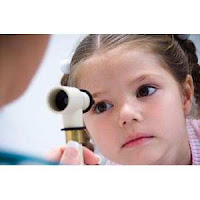 Vision problems are more than just a nuisance for children. Impacted vision can have serious effects on a child's ability to learn in the classroom.
Vision problems are more than just a nuisance for children. Impacted vision can have serious effects on a child's ability to learn in the classroom. Imagine trying to read a textbook or see the chalkboard with words dancing around or vision doubled. What if the words were blurred or even backward?
These are the problems thousands of students face. Poor grades or an inability to pay attention in class may be incorrectly attributed to other learning or behavioral issues when really they could stem from poor vision.
Most vision screenings at school do not check for tracking, focusing, eye teaming, or perceptual skills. They simply check for visual acuity. Therefore, students with certain vision impairments may be sent on their way with a 20/20 bill of health. An optometrist or opthalmologist will be able to diagnose vision problems that are not apparent in school exams.
Without proper diagnosis, children can experience low self-esteem and feelings of inadequacy in school. With repeated admonishments from educators and parents, children may view themselves as "stupid" or unable to learn. This could impact them throughout their entire lives.
Corrective treatments can improve a child's ability to see and learn. A study published in the Archives of Ophthalmology indicated that test scores of preschool-aged children who had hyperopia and astigmatism were lower than those who did not. Within 6 weeks of wearing corrective glasses, the children's test scores improved significantly.
The American Optometric Association recommends comprehensive eye exams each year before a child enters school. Parents can make this a part of annual physical exams when taking kids for yearly wellness visits.
Children are not alone in vision problems. Adults can also be impacted by any number of vision ailments. Doctors recommend annual eye exams for adults as well. Make it a family affair and schedule appointments on the same day.Share on: facebook
No comments:
Post a Comment